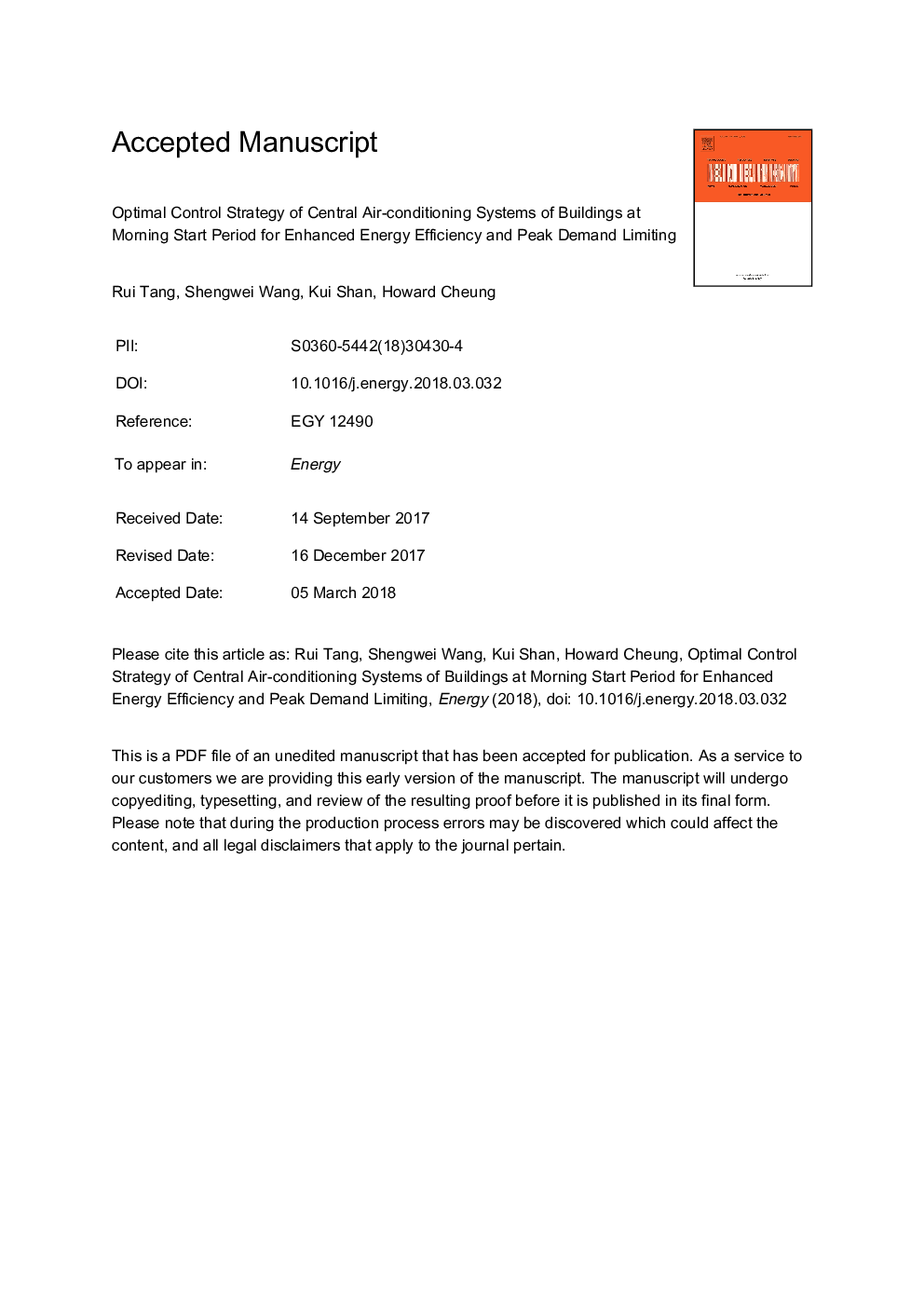| Article ID | Journal | Published Year | Pages | File Type |
|---|---|---|---|---|
| 8071786 | Energy | 2018 | 35 Pages |
Abstract
Air-conditioning systems in commercial buildings are usually switched on before office hour to precool buildings to create an acceptable working environment at the beginning of the office hour in cooling seasons. However, due to high cooling demand during morning start period particularly in hot seasons, often much higher than the capacity of cooling supply, the feedback control strategies in air-conditioning systems often fail to control this cooling process properly. The imbalanced cooling distribution and large difference of cooling-down speeds among different spaces result in the need of significantly extended precooling duration as well as over-speeding of water pumps and fans that lead to serious energy waste and high peak demand. An optimal control strategy is therefore developed to determine the number and schedule of operating chillers and particularly to achieve an optimal cooling distribution among individual spaces. Case studies are conducted and results show that the proposed control strategy could shorten the precooling time about half an hour because of similar cooling-down speeds among individual zones. The energy consumption of the air-conditioning system during morning start period is also reduced over 50%. In addition, the peak demand is reduced significantly contributed by the improved controls of secondary pumps and fans.
Related Topics
Physical Sciences and Engineering
Energy
Energy (General)
Authors
Rui Tang, Shengwei Wang, Kui Shan, Howard Cheung,
